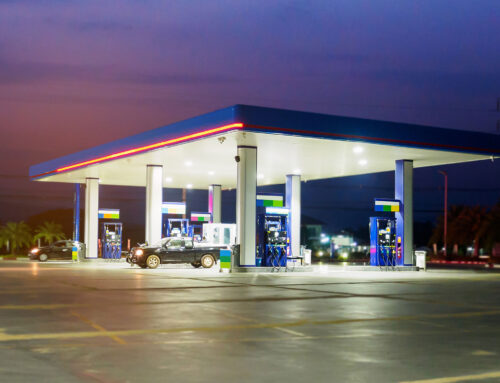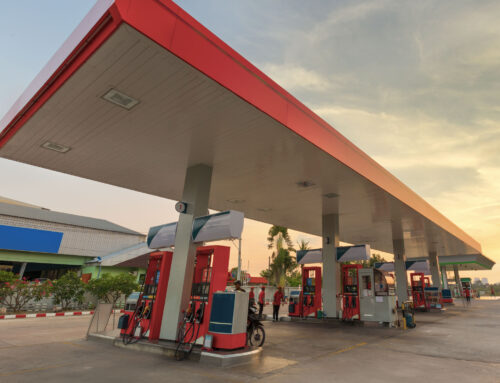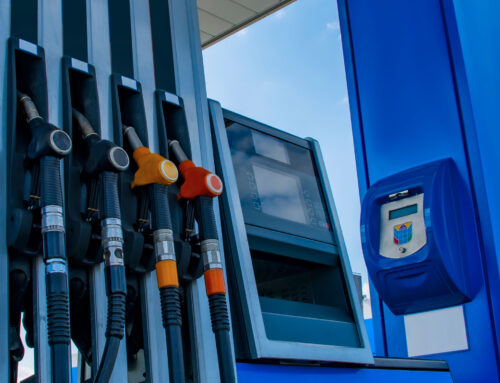Smaller truck stops stay competitive through smart marketing and leveraging service and convenience. As the owner of a small truck stop, you probably don’t have expansive marketing budgets, public relations contacts, or tens of thousands of Instagram followers. You have to make tough choices, like whether or not to add shower and laundry facilities and then figure out how to market that new feature yourself.
Challenging as it is, don’t fall for the hype. Your truck stop might be smaller than the Sinclair gas station on the next exit, but that doesn’t mean it can’t compete effectively.
Small truck stops can stay competitive, serve a high volume of customers and do so with a high rate of customer satisfaction if it leverages two things: visibility and convenience. Here’s how you can get started.
Focus on Increasing Visibility
Visibility is about more than having your sign illuminated and high enough for prospective customers to see it from the highway. It should begin with your marketing plan and permeate every aspect of your sales and marketing campaign.
As a smaller business, this strategy is what helps you reach customers, integrate feedback from current customers, improve customer satisfaction, and ultimately build a rock-solid brand.
How do you tackle this seemingly daunting task? First, develop a marketing plan.
10 Marketing Essentials to Help Smaller Truck Stops Stay Competitive
According to Small Business Administration, there are 10 essentials of a marketing plan:
- Target Market. Instead of trying to be the truck stop for all companies, identify your ideal customers. What kinds of products and services do they need? How can you create an environment in which those ideal customers come to rely on your small truck stop?
- Messaging. Decide how you are going to communicate your truck stop’s value proposition, including the words you’ll use in ads, the images you’ll use in marketing materials and social media channels.
- Media. Choose which channels you’ll post on, which kind of media (print, digital, TV) you’ll advertise in, and what exactly your advertising budget is.
- Pricing. You don’t need to offer the cheapest services, but you do need to offer something competitive and, potentially, niche.
- Channels. Pinpoint how business is coming into your truck stop. For example, how much of your business comes from truckers driving by and seeing you versus a partnership with a particular fleet?
- Promotion. Try creating a time-sensitive offers throughout the year to boost sales and bring in new customers.
- Tasks and major milestones. Effective marketing needs not only goals, but tasks that lead to accomplishing those goals.
- Important metrics. Track store traffic, web traffic, social media followers, and other critical metrics.
- Review schedule. Marketing campaigns are not an ad hoc effort. They are planned down to the day.
- Budgets. Pay attention to marketing expenses and how much money your sales and marketing campaign is actually bringing in.
Leverage Convenience
Convenience is the gold standard for truck stops. In an interview with Fleet Owner, a general manager of a San Antonio Flying-J said truckers will do anything they can not to have to stop at three different places.
That’s an easy thing for a huge stop like Flying-J to accommodate. It doesn’t face the same kind of space constraints as a small truck stop; therefore, its owners can add things like a fresh produce section and a repair shop.
For small truck stops, convenience needs to be leveraged in a different way. Make sure your stop’s diesel island has Visa/MasterCard acceptance. If one trucker can’t pay for fuel because of a credit card acceptance issue, their entire fleet won’t patronize your truck stop.
Use Over the Road (OTR) cards with rewards programs. For example, Comdata’s MyFleet program offers fuel savings and credit options. These additional features help you streamline payment and help fleets meticulously track their spending. Invest in a POS system, such as Trendar, that seamlessly integrates with OTR cards.






